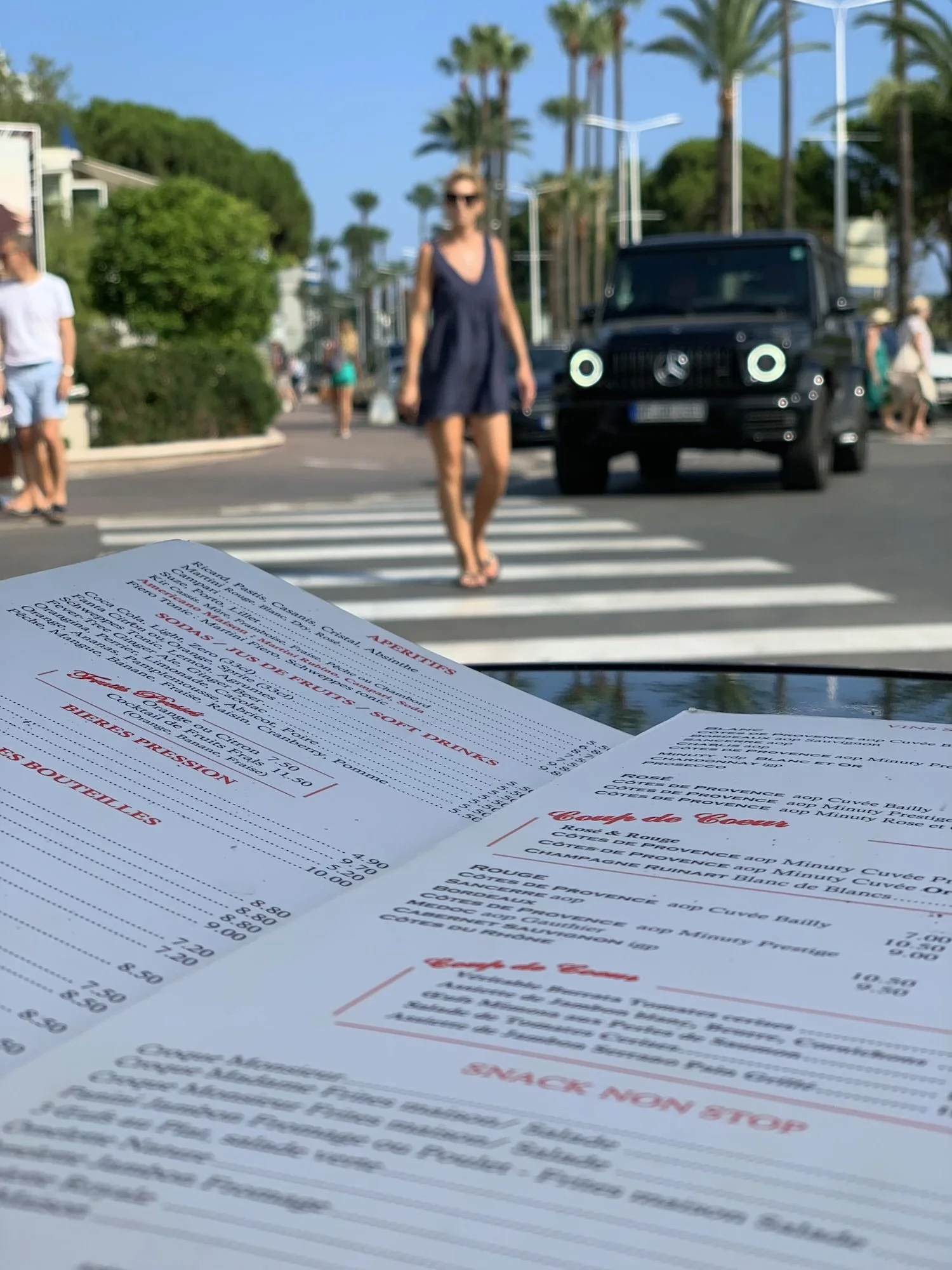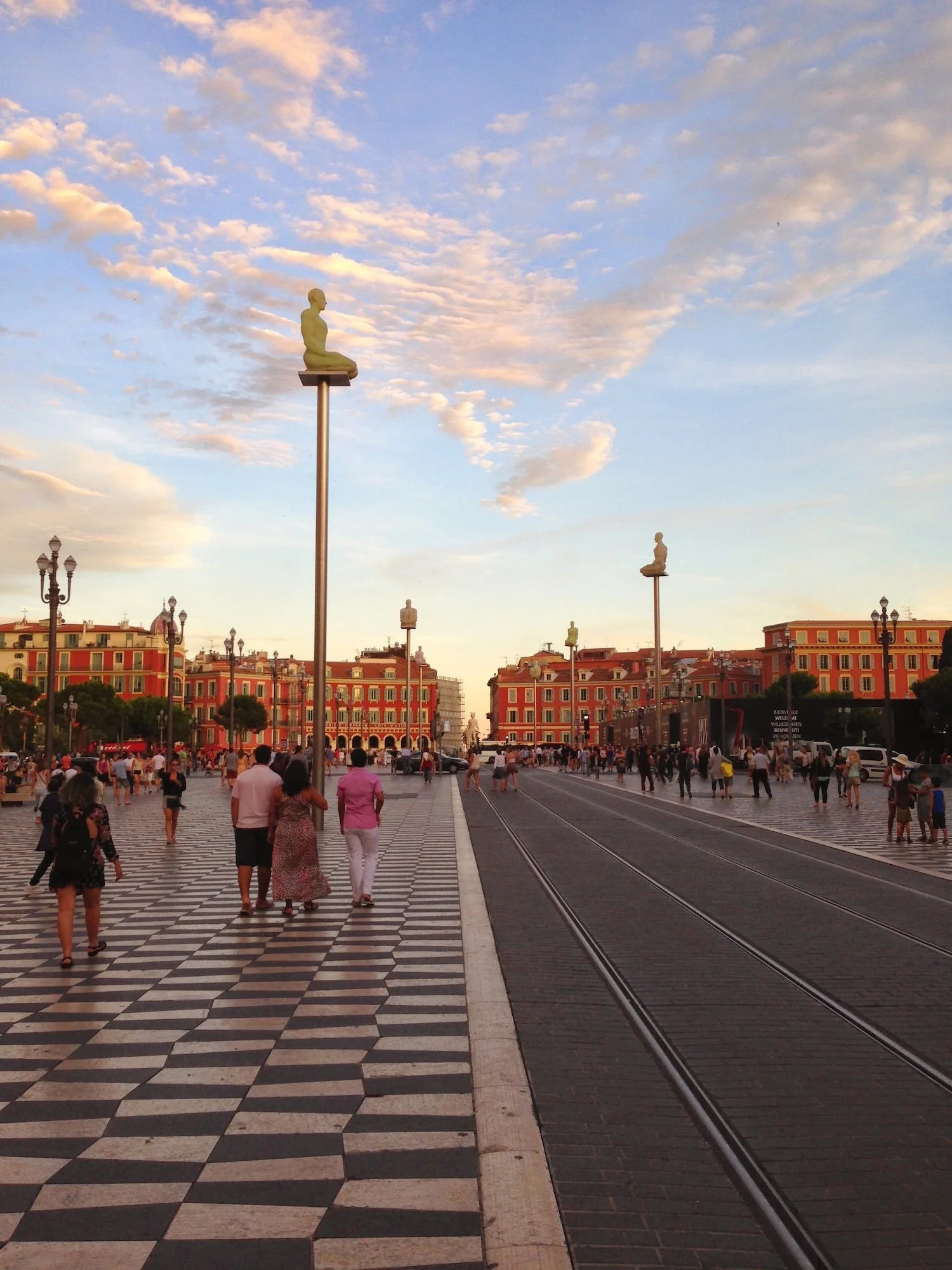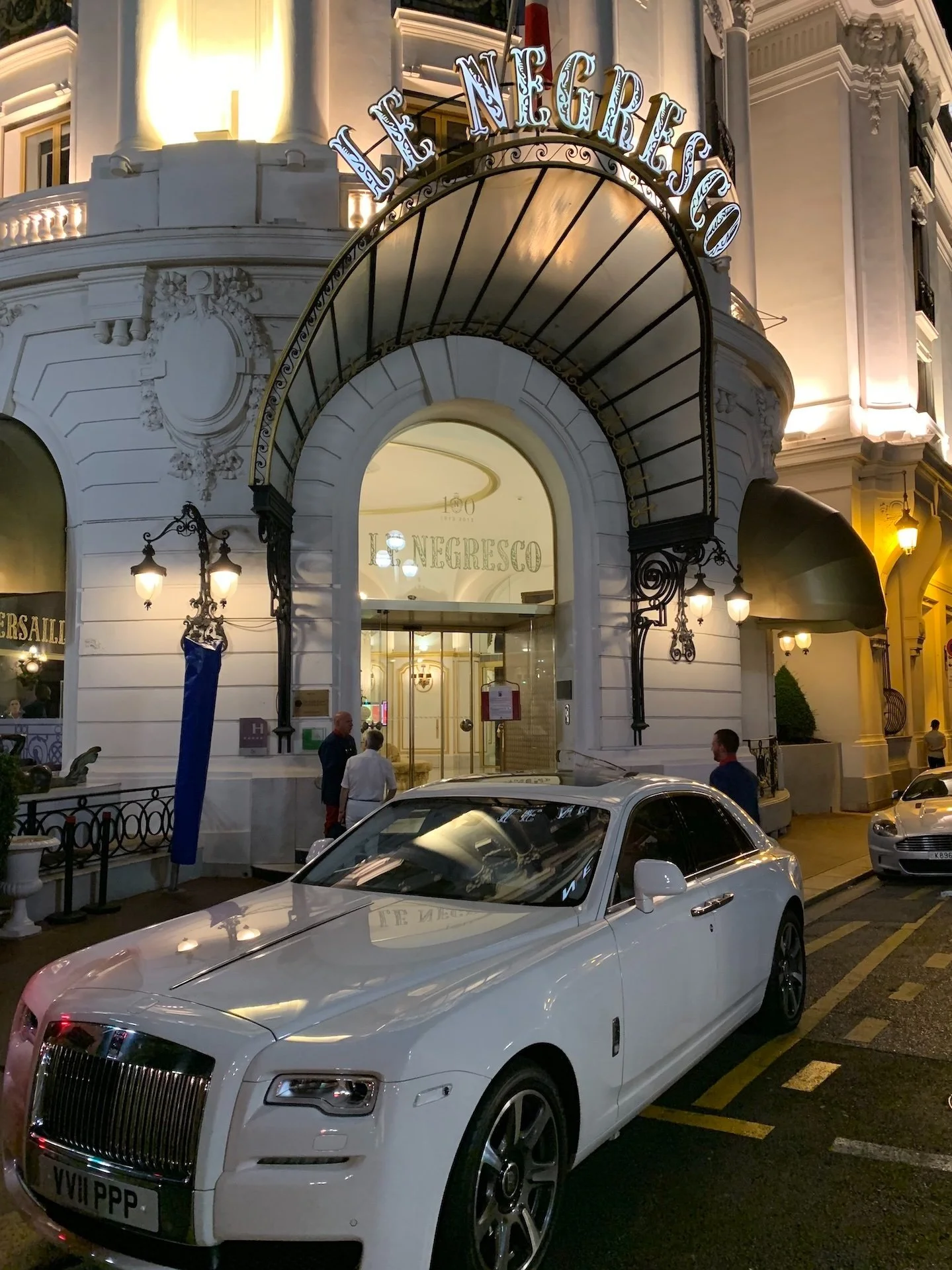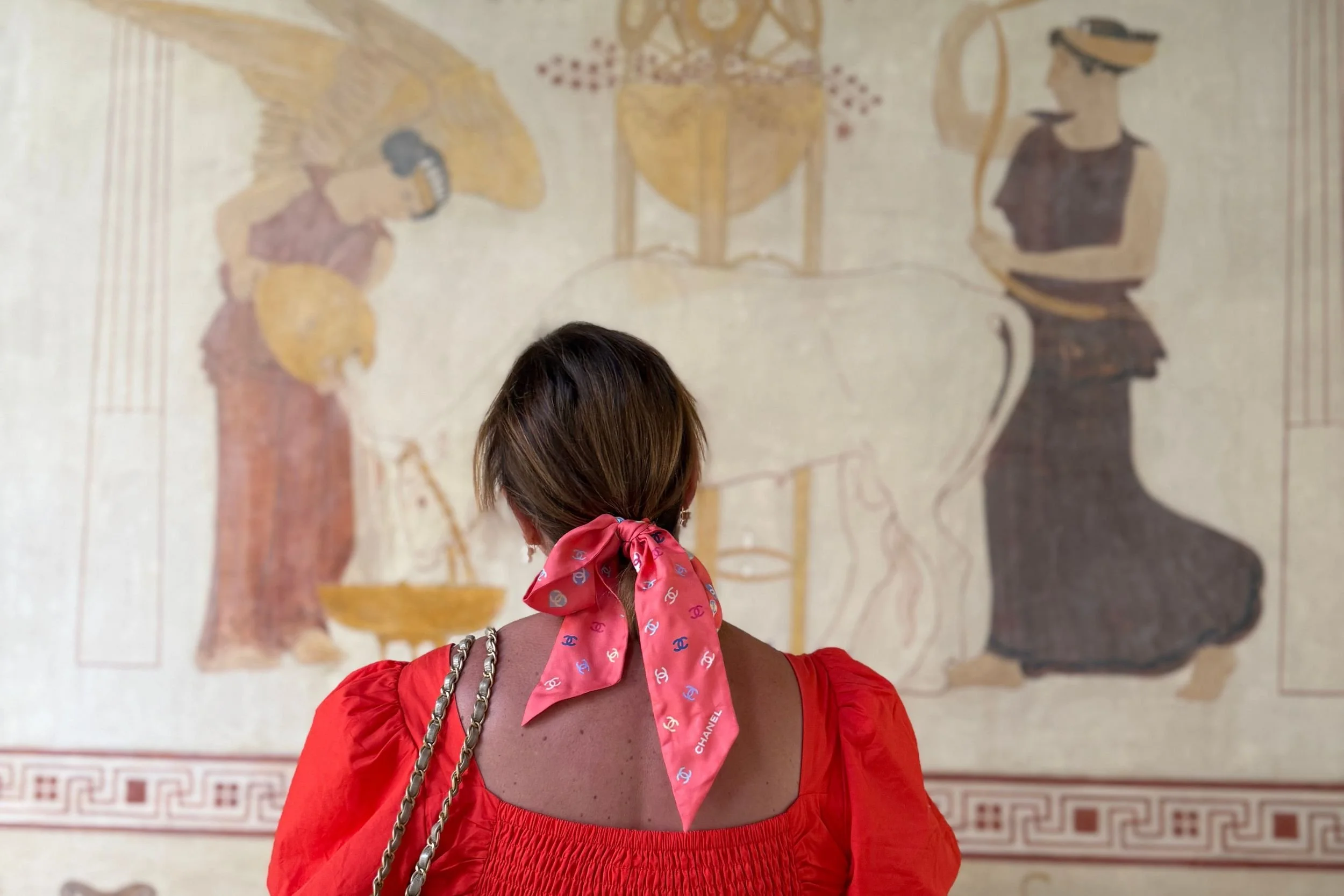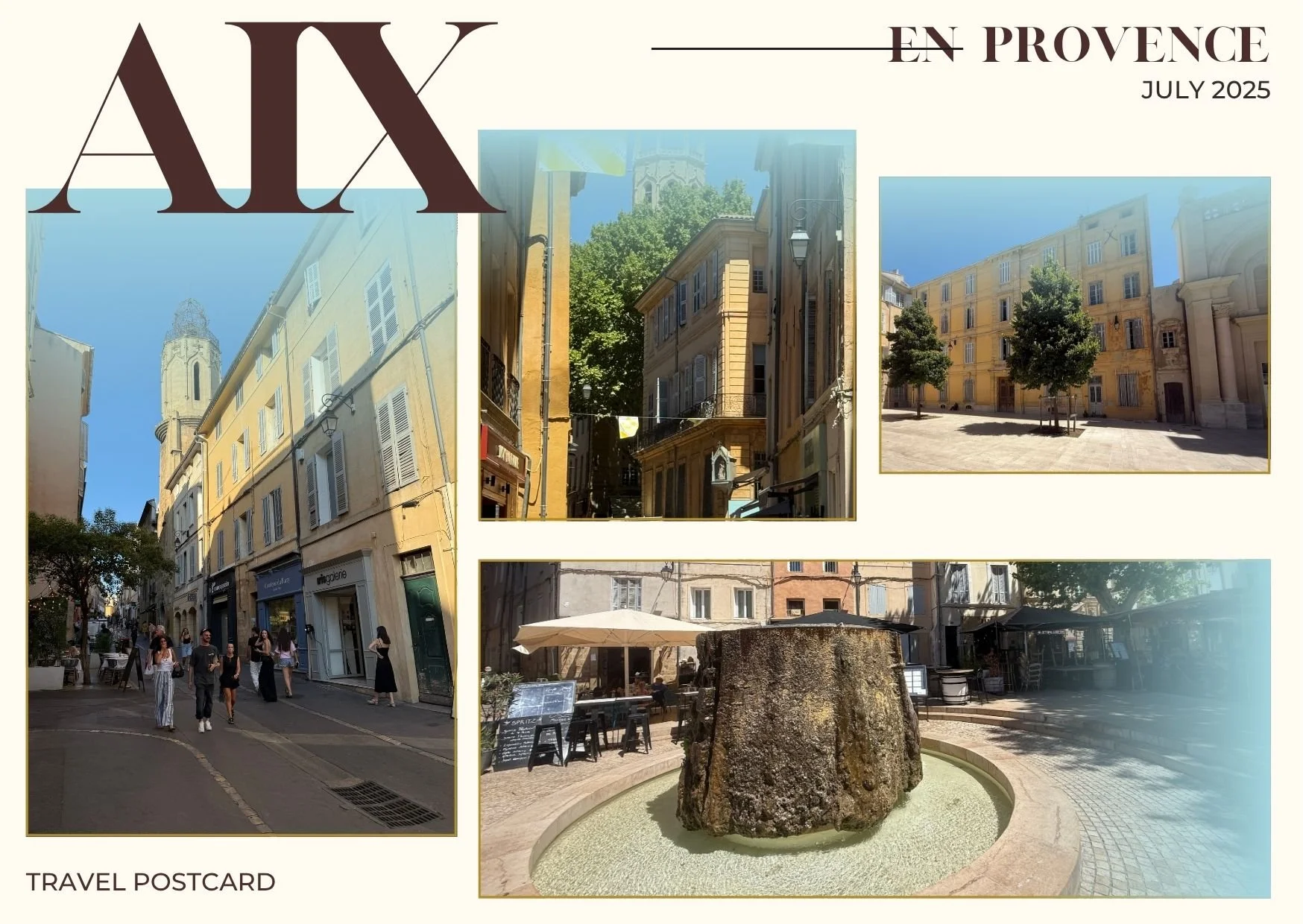Exploring the South of France: From the French Riviera to Rustic Provence
From the mega-yachts of Saint-Tropez to the sun-drenched villages of Provence, the South of France blends glamour and grace like nowhere else. It’s a place I’ve returned to for over twenty-five years, drawn back time and again by the light, the landscape, and that unmistakable sense of style.
If you’ve ever wondered what makes this region so special—or even what counts as the “South of France”—you’re not alone. With overlapping names like Provence, the Côte d’Azur, and the French Riviera, the map can get confusing. So let’s break it down and unlock the magic of each part of this sun-drenched corner of Europe
What Is the South of France?
The “South of France” broadly refers to the lower portion of the country, stretching from the Spanish border near Biarritz to the Italian border at Menton. It includes:
Occitanie — the historic heartland of towns like Carcassonne
Provence— known for vineyards, lavender, and quiet hill towns
The Côte d’Azur / French Riviera — the glitzy Mediterranean coast
It’s a diverse region, culturally and geographically. Inland you’ll find Roman ruins and olive groves; on the coast, it’s all cocktails, Cannes, and coastal glamour.
Côte d’Azur vs. French Riviera: What’s the Difference?
None, really. The terms are used interchangeably.
Côte d’Azur means “Azure Coast,” a name coined by French poet Stéphen Liégeard in 1888.
French Riviera is simply the English equivalent.
Both refer to the Mediterranean coastline from roughly Saint-Tropez to the Italian border, including Cannes, Nice, and Menton. While Provence is inland, it often overlaps culturally and geographically with the Riviera.
Key Destinations Across the South of France
From fortified cities to coastal icons and quiet inland villages, the South of France is more than a single destination — it’s a series of landscapes, lifestyles, and legacies. To help you get your bearings, we’ve divided this section into three parts: the cultural heartlands of Occitanie, the glamour of the Côte d’Azur, and the rustic beauty of Provence.
Occitanie: Fortresses and Forgotten Heartlands
Often overlooked by travellers rushing to the Riviera, the Occitanie region offers its own brand of southern charm — hilltop citadels, Roman ruins, and a rich cultural identity rooted in medieval France.
Carcassonne is the star: a perfectly preserved walled city perched above the Aude River, with 3km of ramparts and 53 towers that make it feel more like a movie set than a living town. But it is very much alive — filled with cafés, galleries, and cobbled lanes that radiate warm southern charm.



To the west, Toulouse — the “Pink City” — surprises with its brick architecture, bustling markets, and space-age edge, thanks to its role as France’s aerospace capital. In the south, Nîmes offers one of the best-preserved Roman arenas in Europe, still used today for concerts and events.
Marseille: Gateway to Provence and the Mediterranean
As you move east from Occitanie, the landscape changes — and so does the pace. Enter Marseille, France’s oldest city and the unofficial gateway to Provence. Founded by Greek sailors over 2,600 years ago, this port city has always looked outward — to the sea, to North Africa, and beyond.
Today, Marseille is a study in contrast: raw yet refined, ancient yet evolving. You’ll find bold modern architecture alongside crumbling alleyways, Michelin-starred restaurants a few steps from fish markets, and street art splashed across historic façades. For a cinematic take on the city’s political and cultural tensions, Marseille on Netflix (starring Gérard Depardieu) offers a gritty drama set against a stunning backdrop — one of our picks in The South of France on the Small Screen guide.
It may not have the polish of Nice or the postcard perfection of Provence, but that’s its charm. It’s real, and it’s alive.
Provence: Hilltop Villages, Lavender Fields and Roman Ruins
Away from the coast, Provence unfolds in a different rhythm—quiet, sun-warmed, and full of texture. It’s not the gilded bling of the Riviera but something older and more romantic.
Luberon Villages and Lavender Dreams
The Luberon is a region of winding country roads, vineyards, and ochre-hued towns like Gordes and Roussillon. Cobblestone alleys, hillside cafés, and galleries make it a place to get lost on purpose.
Nearby, the Abbey of Sénanque—often surrounded by lavender fields in July—offers one of Provence’s most iconic views.
Cultural Cities: Aix-en-Provence, Arles, and Avignon
Aix-en-Provence is stately and cultured. Think tree-lined boulevards, fountains, and 18th-century mansions. It’s also the setting of the TV series Murder in Provence, which captures its timeless beauty.
Arles offers Roman ruins and Van Gogh references in equal measure. Its arena still hosts events, and its streets feel soaked in faded grandeur.
Avignon, home of the Popes in the 14th century, is dominated by the Palais des Papes—a Gothic fortress with UNESCO status and festival flair.
Discovering the Côte d’Azur: France’s Most Glamorous Coastline
What most of us know as the French Riviera—officially the Côte d’Azur—runs from Saint-Tropez to Menton, hugging the Mediterranean in a sparkling display of wealth, beauty, and coastal elegance.
Saint-Tropez to Cannes: Riviera Icons
Once a quiet fishing port, Saint-Tropez became a jet-set icon after Brigitte Bardot’s breakout role in And God Created Woman. Today, it’s a playground of designer boutiques, moored superyachts, and beach clubs.
Just north, Port Grimaud surprises with its colourful canals. Further along the coast, relaxed beach towns like Sainte-Maxime, Fréjus, and Saint-Raphaël offer a gentler taste of the Riviera before arriving in Cannes.
Cannes itself is cinematic: all palm-lined boulevards, private beaches, and iconic hotels like the Carlton. While we feel it has lost its uniqueness, the old town of Le Suquet and the glitzy harbour still make it worth a visit to say you’ve been. Old favourite restaurants like Café Roma, Au Mal Ausis and Gaston Gastounet remain if you are looking for dinner.
Stopping for a drink at the Festival Bar, one of our Cannes favourites
Antibes, Juan-les-Pins and the Bay of Angels
Cap d’Antibes is a name steeped in literary and cinematic legend. It’s home to the famous Hôtel du Cap-Eden-Roc, a favourite of stars and aristocrats alike. Nearby, Juan-les-Pins hosts a legendary jazz festival each summer that’s been running since the 1960s.
Nice, the Queen of the Riviera, blends old-world elegance with modern energy. With its Italianate old town, Promenade des Anglais, and iconic Hotel Negresco, it offers the best of city, beach, and culture. It’s also the most convenient base for a long weekend—just 20 minutes from the international airport.
Cap Ferrat, Èze, and the Hills Above Nice
Just east of Nice, Cap Ferrat juts into the sea like a private peninsula. Here you’ll find the magnificent Villa Ephrussi de Rothschild, surrounded by exotic gardens and sea views in every direction.
Climb inland and you’ll reach Èze, a medieval hilltop village with a ruined castle and panoramic vistas. The Château de la Chèvre d’Or is the jewel of the village—a luxury hotel carved into the cliffs with some of the best views on the coast.
In the hills above, Saint-Paul de Vence and Vence have long inspired artists, from Chagall to Matisse. The Colombe d’Or restaurant, filled with priceless art, still serves Provençal cuisine beneath vines and history.
From Villefranche to Menton: Rolling Stones, Riviera Glamour, and Pastel Perfection
Just east of Nice, Villefranche-sur-Mer curves around one of the deepest natural harbours on the Riviera. It’s an achingly beautiful town of terracotta roofs and narrow lanes—but it also holds a unique place in music and film history.
Perched above the bay is the legendary Villa Nellcôte, where The Rolling Stones recorded Exile on Main St. in the summer of 1971. Nearby, on the waterfront itself, stands David Niven’s pink villa, La Fleur du Cap—an elegant landmark of old-school Riviera glamour.
Around the headland lies Beaulieu-sur-Mer, known for its palm-lined promenade, Belle Époque architecture, and the Greek-inspired Villa Kérylos. This whole stretch—Villefranche, Beaulieu, Cap Ferrat—captures the refined charm of a more discreet Riviera.
Finally, at the Italian border, Menton greets you with pastel façades, quiet beaches, and its famous lemon festival. It’s a peaceful finale to the Côte d’Azur’s crescendo.
Menton



